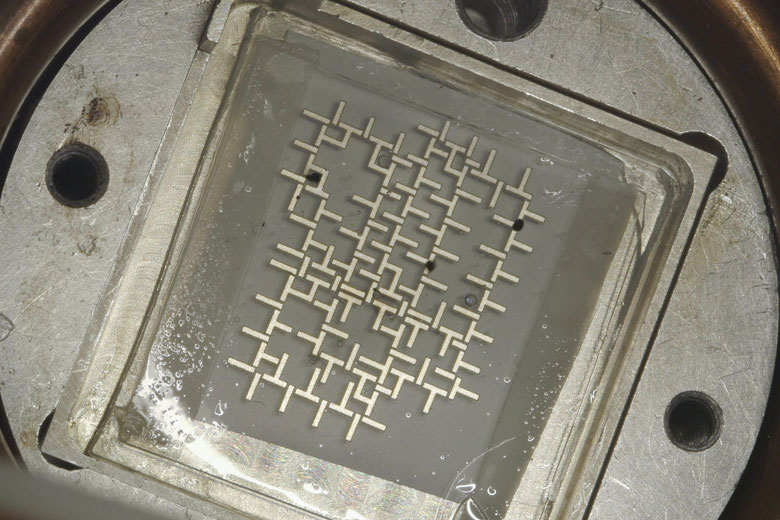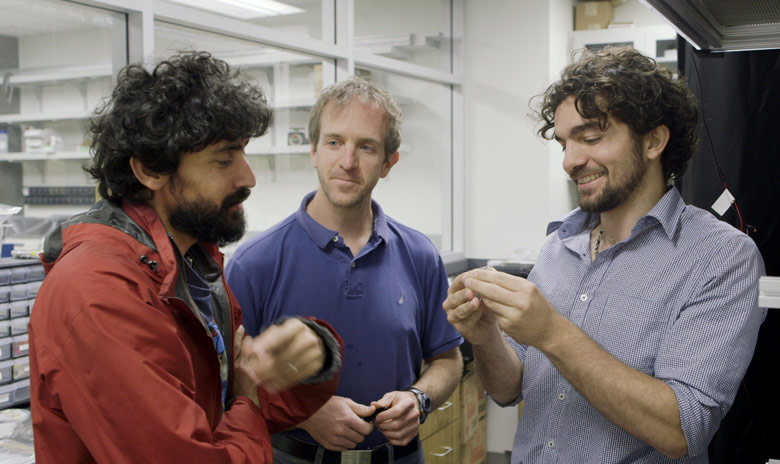The contact of water with the computer looks scary but researchers succeeded in constructing a processor that operates based on the physical movement of water droplets. Researchers at Stanford University under the supervision of Assistant Professor Manu Prakash, created a new processor based on motion water drops instead of electrons.
It’s a breakthrough in physical computing that gets at the most basic definition of a computer: any programmable device that can carry about logical mathematical operations. By combining cutting-edge theory in fluid dynamics with theory in computing, the team was able to create a synchronous computer based entirely on the physics of water. The absence or presence of a drop of water represents respectively the digits “0” and “1” of the binary code.
 A computer based on the physical movement of water is much, much slower than a conventional computer based on the movement of electrons. The research team (in which a member of the Ph.D. student George Katsikis) made an arrangement with metal pieces T and I shaped on a flat surface and around the device they placed coils. This surface has the size of a small postage stamp. From there, they inserted tiny drops of water doped with magnetic nanoparticles. A series of rotating magnets underneath the circuit impels the drops to move a set distance forward on each “clock” tick, keeping everything in sync. The droplets then follow a set pattern based on their starting point, and an overhead camera interprets the absence or presence of drops as a zero or one.
A computer based on the physical movement of water is much, much slower than a conventional computer based on the movement of electrons. The research team (in which a member of the Ph.D. student George Katsikis) made an arrangement with metal pieces T and I shaped on a flat surface and around the device they placed coils. This surface has the size of a small postage stamp. From there, they inserted tiny drops of water doped with magnetic nanoparticles. A series of rotating magnets underneath the circuit impels the drops to move a set distance forward on each “clock” tick, keeping everything in sync. The droplets then follow a set pattern based on their starting point, and an overhead camera interprets the absence or presence of drops as a zero or one.
 Prakash first came up with the idea for the computer nearly a decade ago, but although it was easy enough to work out how to control water droplets – by infusing them with magnetic nanoparticles and moving them around a maze of iron bars – finding a way to synchronise these movements proved challenging. Prakash’s team found that this magnetic ‘clock’ moves the system forward in perfect synchrony, which means that it can run virtually forever without errors.
Prakash first came up with the idea for the computer nearly a decade ago, but although it was easy enough to work out how to control water droplets – by infusing them with magnetic nanoparticles and moving them around a maze of iron bars – finding a way to synchronise these movements proved challenging. Prakash’s team found that this magnetic ‘clock’ moves the system forward in perfect synchrony, which means that it can run virtually forever without errors.
The goal of researchers is not to compete with conventional processors, but to build a new computer that will handle and accurately control the physical matter. The ability to precisely control droplets using fluidic computation could have a number of applications in high-throughput biology and chemistry, and possibly new applications in scalable digital manufacturing.
The next goal is to reduce the size and perform calculations exactly. The team has already shrunk the chips down to a postage-stamp, and could could reduce them even more while potentially controlling millions of droplets instead of just several. To test the full potential of the system, the Stanford team is developing a design kit for the general public or other researchers.
